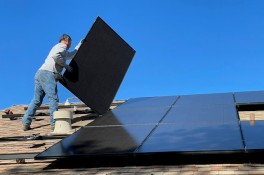As the value of the Japanese Yen continues to rise, Japan's automakers are now searching for ways to produce their cars at cheaper rates.
Nissan, Honda and Toyota are pushing to have their cars built outside of their country and move manufacturing to America, Canada and Mexico. Production cost in America is not as expensive as in Japan due to the decreasing value of the American dollar. By moving production out of their country Japanese automakers hope to see their profits increas
Deciding to move production west also is a direct reaction from Japan's recent natural disasters that have caused a decrease in production and a loss of profit.
The seasonally adjusted annual rate (SAAR) of car sales is expected to top 14 million in 2012, a substantial improvement over recession sales levels of around 12 million.
According to Manning & Napier Senior Research Analyst Walter Stackow, Japanese automakers have been careful not to make specific promises to the market about how much they plan to expand North American manufacturing capacity.
Several recent announcements highlighted the increased focus of Japan's carmakers on localized production in North America. Toyota recently sent a directive to North American suppliers telling them to plan for three years of record production, according to Auto News. Similarly, Honda is hoping to goose its North American manufacturing to export 200,000 vehicles out of the continent by next year, up from 55,000 in 2011, according to The Wall Street Journal.
Toyota, for its part, has already added 1,500 manufacturing jobs since February and has made a cumulative investment of $745 million in factories in Indiana, West Virginia, Kentucky, Alabama and Canada. Most recently, Toyota invested $100 million in expansion of Lexus RX production in Canada, a move which exemplifies the approach being taken by Japanese carmakers in North America.
It is not unusual for manufacturers to hire between 1,000 or 1,500 new workers when they add a factory shift, according to IHS Automotive Senior Manager for North American Vehicle Forecasts Mike Jackson. In the aftermath of the 2008-09 economic meltdown, automakers have been focused on improving efficiencies and shift structures rather than building new factories. Factories tend to be enormously expensive 30- to 50-year investments that can cost upward of a billion dollars, making new factory construction unlikely before the U.S. automotive market returns to prerecession levels above 15 million or 16 million SAAR.
The goal for Japanese carmakers is to produce 100 percent of cars meant for the U.S. market in North America, a task which will be accomplished in the short term "through the use of additional shifts," according to Gutierrez. The biggest expansion will likely be in Mexico, where labor is cheapest; however, U.S. manufacturing is expected to grow faster than Canadian, where labor costs are the highest.
Toyota Motor Corporation (NYSE: TM) shares fell 43 cents to $81.06. Honda Motor Co. (NYSE: HMC) shares rose 3 cents to $32.09. Nissan Motor Co. (Tokyo: 7201) shares fell 0.26 percent to 771 yen ($9.84).
© 2017 Jobs & Hire All rights reserved. Do not reproduce without permission.




